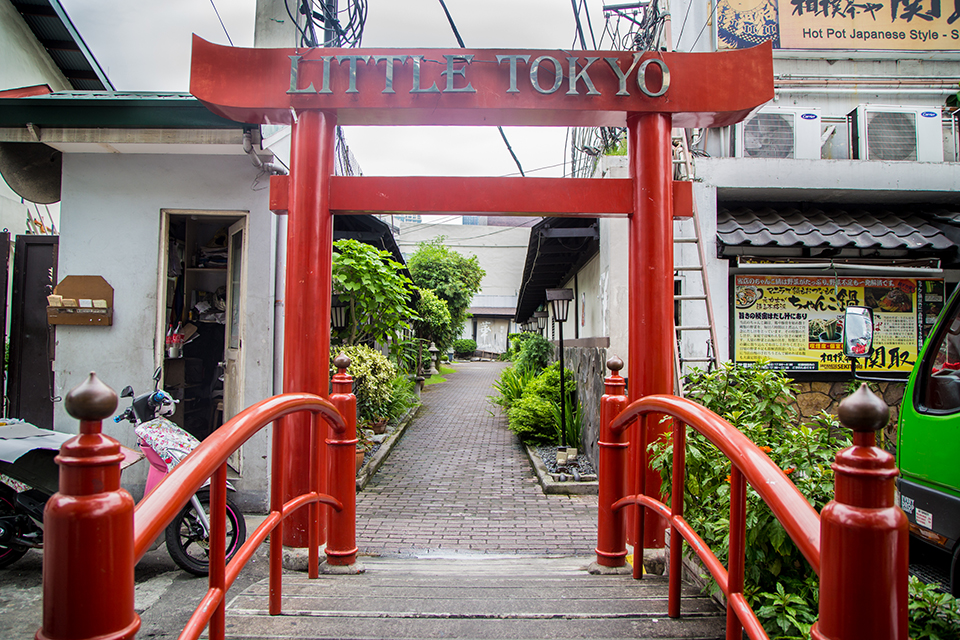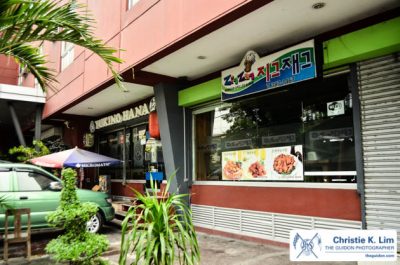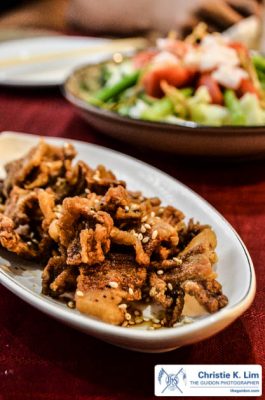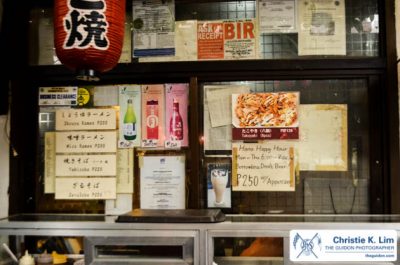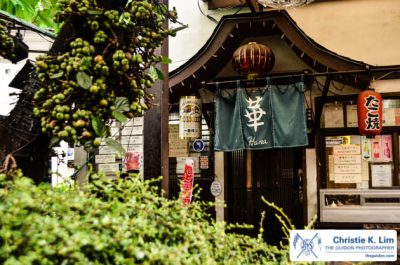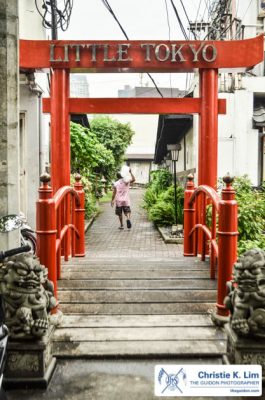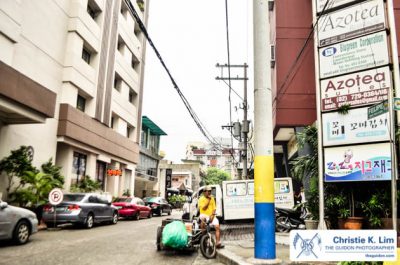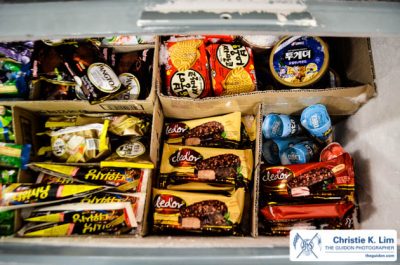From a foreigner’s perspective, it is often difficult to determine who is and isn’t a Filipino. After all, what is he supposed to make of a brown-skinned woman with Chinese features talking about the latest Korean drama in perfect English?
From the way we speak to the way we dress, we owe much of our everyday lives to the many cultures that have washed up on our shores. These influences have become a huge part of the Filipino identity, and we need not look any further than our own food scene for a taste of this fusion.
Places like Chinatown and Little Tokyo have long been established in Manila, while Koreatown is fast on its way to becoming a permanent fixture in our cities.
Places like Chinatown and Little Tokyo have long been established in Manila, while Koreatown is fast on its way to becoming a permanent fixture in our cities. International food is not merely a trend but a mainstay, with each town’s development representing the country’s journey towards becoming an even more diverse cultural melting pot.
The little town in every city
That it is nearly impossible to travel the world without stumbling upon a Chinatown proves how far Chinese culture has spread. “The Chinese have been outside of China, trading in various countries for centuries now,” explains Dr. Sidney Bata, director of the Ricardo Leong Center for Chinese Studies. “When a place is already ‘saturated,’ they move to untapped territories.”
Binondo, established in the Philippines by the Spanish in 1594, is the world’s first Chinatown. Home to a unique fusion of Chinese and Filipino culture, it proves that every Chinatown is unique to its own city.
The mix of the two cultures is evident when one strolls along San Nicolas Street, a few crowded streets away from the landmark Binondo Church. There, devotees offer hiu (traditional Chinese incense) at the Santo Cristo de Longos shrine, a display of worship that is a testament to the intermingling of Christianity and Chinese traditions.
A few blocks away is Ongpin Street, where one can find Eng Bee Tin, a Chinese Deli that knows a thing or two about blending cultures. Though the colorful variety of goods they sell is quite overwhelming, it doesn’t stop tourists and locals alike from flocking to the store for their favorite hopia. Eng Bee Tin marries sweet Filipino flavoring with this traditional Chinese pastry by offering it in a variety flavors such as langka, buko, pandan and their signature ube.
Along Chinatown’s streets, vendors serve up an assortment food ranging from the traditional fish and squid balls to more unconventional delicacies. Fried frog legs, for instance, are quite popular along Estero despite the area’s less than appetizing stench.
Ramen revisited
Where the Chinese assimilated themselves into countless cultures through trade, the Japanese took a less conventional path to world domination: Hello Kitty. Likewise, popular anime like Dragon Ball Z and Sailor Moon and the growing trend of cosplay have ensured that Filipinos are no strangers to Japanese culture.
Fast food chains like Tokyo Tokyo and Yoshinoya have also made Japanese food well loved among many Filipinos. However, the small collection of restaurants in Little Tokyo knocks us off our pedestals when it comes to authentic cuisine.
The restaurants are huddled together in the midst of a bustling Makati. Banners and flags with words written in hiragana (Japanese characters) hang above the wooden doors and shoji (traditional Japanese design) windows, as colorful paper lanterns dangle from the roofs.
Unlike modern Japanese restaurants like Teriyaki Boy and Omakase, the interior of restaurants like Kagura along Chino Roces Avenue showcase traditional Japanese design: One can sit opposite the wooden kitchen counter and watch the chefs prepare their famed okonomiyaki, a savory pancake topped with Japanese mayonnaise and okonomi sauce. Meanwhile, diners take charge at Urameshi-ya, a yakiniku restaurant where customers grill raw ingredients on their tabletops.
Director of the Japanese Studies Program Hiroko Nagai, PhD, is quick to note that unlike Chinatown, Little Tokyo is not meant to be a community. “Japanese culture was separated from Philippine culture so they didn’t mix,” she explains. The restaurants were initially established to cater to Japanese businessmen frequenting Makati in the 1980s.
Since then, the town has expanded to include other stores that contribute to the area’s small town feel. The grocery Choto Shop is chock full of colorful and quirky Japanese snacks: Hello Kitty and Rilakumma biscuits, Pokemon milk, One Piece candy and Pocky are just some of the kawaii products for sale.
Hallyu rising
“Nobody” was the battle cry when Korea invaded Filipino popular culture in 2009. The high-pitched voices of the Wonder Girls have since caused equal amounts of delight and despair, alongside popular K-Pop groups like 2NE1, Super Junior and SHINee.
Hallyu (Korean wave) has hit the Philippines not only through K-Pop groups, but also through the many Koreans making their way to our tropical shores.
“[The] warm climate appeals to Koreans and if [they] have children, they are willing to spend much money for their English education, ” explains Kyungmin Bae, a visiting lecturer at the Department of Modern Languages. Thus, Koreans have slowly begun to build their own communities in cities all over the Philippines, particularly around the Metro.
Unlike Chinatown and Little Tokyo, Koreatown is not a full-fledged town as of yet. It refers to the area loosely surrounded by Makati Avenue, Bel-Air Village, Jupiter Street and J.P. Rizal Street in Makati where Korean restaurants, bars, groceries and convenience stores are interspersed.
This part of Makati is usually described as sketchy, because it is very close to the infamous P. Burgos street, the city’s red light district. As Korean haunts are scattered around the area, so are various nightclubs.
Though it might not appear to be the perfect setting for the bubbly and colorful Korea we’ve come to know, it is surely the place to find the best of what Korean food has to offer.
At Ma San Garden, found at the far end of Polaris Street right beside Bel-Air Village, customers are welcomed by a Korean lady dressed in a hanbok (traditional dress) and provided with the customary flat metal chopsticks. The restaurant is also known for their sogogi gukbap, with its tender beef strips in red, hot and spicy broth, served in a steaming hot soup.
Convenience stores are also signature when it comes to Korean food culture. Their ice cream is among the most popular items in these stores, coming in unusual shapes and flavors: Red bean and vanilla ice cream sandwiched between fish-shaped wafers and even uniquely flavored blue ice cream packaged in a bottle.
The sweets aside, Korean minimarts usually lean towards the spicy to address the preferences of their Korean customers. With Korean celebrities endorsing all things hot, such as instant chili noodles, chili paste and kimchi, it is no secret that these people like their food well seasoned.
But many Filipinos tend to prefer the sweet treats, probably because of the humid weather. Bae explains that many Korean restaurants have even toned down their hot flavors to cater to local palates.
Culture clash
It’s a wonder that cultures as varied as these have managed to find a common home in the Philippines. City dwellers have the luxury of exploring and getting a taste of their dream destinations without having to leave the country or spend too much money.
The existence of these places lead many to confuse multiculturalism with assimilation—that these foreign cultures have come to redefine the Filipino culture and identity. However, Ivan Man Dy, founder and lead guide of the city tour group, Old Manila Walks, disagrees. “At best they make Manila’s dining scene more cosmopolitan, but to generalize as it enriching the whole Filipino culture is way overboard,” he says.
In spite of these disagreements, one thing is certain. At the end of the day, Chinatown, Little Tokyo and Koreatown are still ideal destinations for anyone seeking authentic flavors. Whether it’s history or cuisine, these little towns that bring flavor and zest are here to stay, spicing up the Metro’s landscape now and for the years to come.

